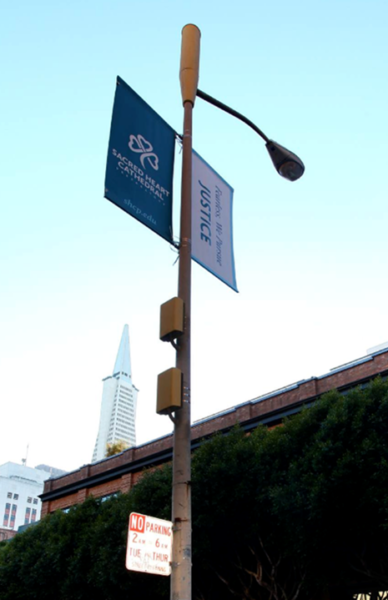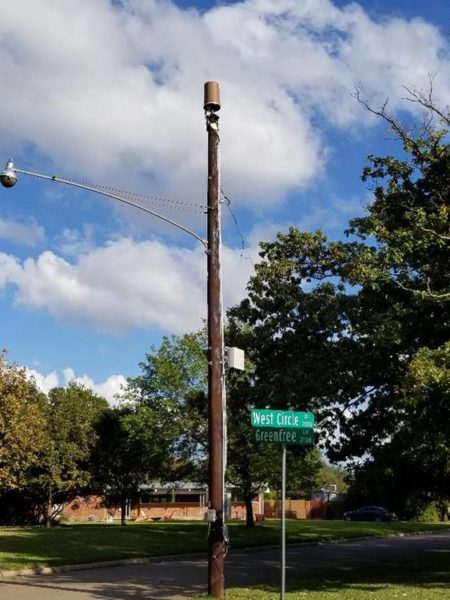Nearly all of us have endured the dreaded “stadium slowdown” on our mobile devices. Though perhaps we should be paying more attention when the Pirates are at bat or the Nailers set up for a power play, in the digital age many of us use our mobile devices wherever we are, including crowded stadiums and arenas. But with so many fans crammed into such a small area, our data usage well outpaces the amount of available bandwidth, making it nearly impossible to send your buddies a Snapchat of that last home goal in WesBanco Arena.
Though an annoyance at sporting events, the essential problem of unequal supply and demand of cellular and broadband data is becoming a more serious issue in our daily lives because of the rapid growth of the Internet of Things (IoT): internet-enabled TVs, smart lights and even smart refrigerators. There are solutions, however, and West Virginia has the opportunity to lead the pack in adopting them.
 One of the answers to this problem is the emergence of small cell technology that will allow us to dramatically increase the amount of bandwidth or data supply in a targeted area. While now nearly all of our cellular data is sent from large towers that cover a wide area, small cells will amplify the existing service in a specific area — such as a dense downtown or a ballpark — and are small enough to fit on existing structures such as utility poles.
One of the answers to this problem is the emergence of small cell technology that will allow us to dramatically increase the amount of bandwidth or data supply in a targeted area. While now nearly all of our cellular data is sent from large towers that cover a wide area, small cells will amplify the existing service in a specific area — such as a dense downtown or a ballpark — and are small enough to fit on existing structures such as utility poles.
“For areas where there is already coverage, small cells will enable much better and faster connections for our customers,” said Andy Feeney, vice president for government affairs of AT&T West Virginia. “Small cells will help many West Virginia customers enjoy faster connections while preparing our network for the next generation of technologies and services like 5G, the Internet of Things and Smart Cities.”
Though they will certainly improve the mobile user experience now, the importance of small cell technology is made critical in consideration of the next level of mobile network speeds: 5G.
5G networks can already reach transmission speeds up to 1,000 times faster than the current standard 4G LTE that most of us use on our cellular devices. For reference, this author averages approximately 12 megabits per second (Mbps) in most of Wheeling, enough to stream HD video or use video chat on a phone. A network connection with 12,000 Mbps could allow up to 500 people to stream video, check email, listen to music and be on a video-conference all at the same time. For businesses both large and small, 5G speeds will be a game changer.
To be able to fully deploy 5G networks, current network infrastructure will need to be upgraded to accommodate the new speeds and sheer amount of data. Small cells are critical to those efforts, particularly in downtowns or office parks where high concentrations of computing occur.
“Consumer demand for data is growing exponentially and will continue to grow as mobile video streaming becomes even more prominent. This increase in data use requires an increase in wireless network capacity; otherwise, service quality could be disrupted or decline. Small cells bring more capacity,” Feeney said. “Think of it this way: instead of a garden hose, small cells will deliver more like a fire hose.”
“Think of it this way: instead of a garden hose, small cells will deliver more like a fire hose.” — Andy Feeney, AT&T
According to Feeney, carriers such as AT&T will begin offering 5G capable phones as early as this year. The next step is building the infrastructure — including small cells — to support a 5G network.

While small cells and 5G networks are exciting, what makes these opportunities especially unique are West Virginia’s ability to become a leader in rolling out these cutting-edge technologies. For decades, the Mountain State has struggled to catch up to its neighbors regarding access to modern networks. For instance, the town of Talcott in Summers County was one of the last in the nation to upgrade from party-line phone dialing, not installing private lines until 1989. Still, the trend continues; according to a 2016 report from the FCC, West Virginia still leads the nation in our share of population without access to broadband at a staggering 30 percent.
To stay ahead of the curve, the West Virginia Legislature has attempted to pass legislation that will provide the regulatory standards necessary to install small cells in the state. House Bill 4357, the West Virginia Small Wireless Facilities Deployment Act, was passed overwhelmingly by the House of Delegates in the 2018 session but never made it out of committee after being sent to the State Senate. It is anticipated that the bill will be reintroduced this session.
A key component of the bill is establishing standards for small cells at a statewide level. Currently, the State of West Virginia treats all cell towers the same regulatorily, whether they be a small cell able to be mounted on a telephone pole or one of the large cell towers high atop our hills. The proposed bill defines small cell technology within state law and provides specifications such as how much a local authority may charge a service provider for use of a right-of-way because many telephone and light poles exist in these boundaries. This regulatory framework will allow providers such as AT&T the ability to work with local governments to implement small cells within their jurisdictions.
“We want to work with municipalities, counties and other stakeholders to get a bill that works for everybody,” Feeney said. “To deliver for our customers, wireless carriers want a statewide standard to deploy small cells as quickly as possible, so we can bring our customers faster speeds and newer technologies.

Once a state law is in place, each municipality can pass ordinances concerning right-of-way and sighting, such as ensuring the small cells do not create visual obstructions to motorists. According to Wheeling Mayor Glenn Elliott, the city has been monitoring the progress made in the legislature and will carefully explore introducing new ordinances.
“When you get to the city level, you’re going to have questions of rights of way, questions of visibility, and it’s going to play into our sign ordinances we have on the books,” said Elliott. “We’ll need to look at it cohesively, but we would certainly be interested in working with the providers to provide places for the deployment of this technology because I think expanding the speed and access for people working in and around the downtown, in particular, would help stimulate economic investment.”
One question voiced during the past legislative session was what the size and design of small cells will be. Because many will be placed on existing poles in our neighborhoods and downtowns, valid concerns were raised on how they might affect the aesthetics of our streets, particularly historic districts. While some raised concerns about the size of the emerging technology, most modern small cells are as small as a pizza box. However, with Wheeling’s rich stock of historic buildings and neighborhoods, the city is still likely to place the visual component of the technology in consideration when approving permits for installation.
“We’ll work to ensure that the placement of small cell technology doesn’t detract from what we’re trying to see as a much more vibrant, much more attractive downtown streetscape,” Elliott said.
While the implementation of small cells may affect the way a place looks, it will have an outsized effect on the way places operate in the digital age. Especially with the growth of the Internet of Things and plans to bring more people to downtown Wheeling to both work and live, the ability to access the highest-speed networks will remain crucial and expected by those who want to come.
“Lack of internet service or lack of capacity is something that is a deterrent for folks who want to live here, work here or have considered investing here,” Elliott said. “Any way we can compete in that respect and show we are just as connected as anywhere else, if not more connected than anywhere else, is an advantage.”
“Lack of internet service or lack of capacity is something that is a deterrent for folks who want to live here, work here or have considered investing here. Any way we can compete in that respect and show we are just as connected as anywhere else, if not more connected than anywhere else, is an advantage.” — Glenn Elliott, mayor of Wheeling
As our devices and applications become increasingly more advanced, so too must the networks that we rely on to use them. The implementation of small cells and in turn 5G networks will allow more of us to use more data without sacrificing speed and reliability. As Wheeling continues to reinvent itself in the digital age, its ability to not only stay current but stand out as a leader in adopting cutting-edge infrastructure is paramount to continuing to attract 21st-century jobs (and sending our friends updates on the Nailer’s latest win.)
• Nick Musgrave is a self-described history geek living in Wheeling, W.Va. He is a graduate of Hastings College in Hastings, Nebraska, where he earned his bachelor’s degrees in history and political science. When not writing for Weelunk or uncovering cool stories about the past, he can often be found reading in his hammock or trying to brew the perfect cup of coffee.



